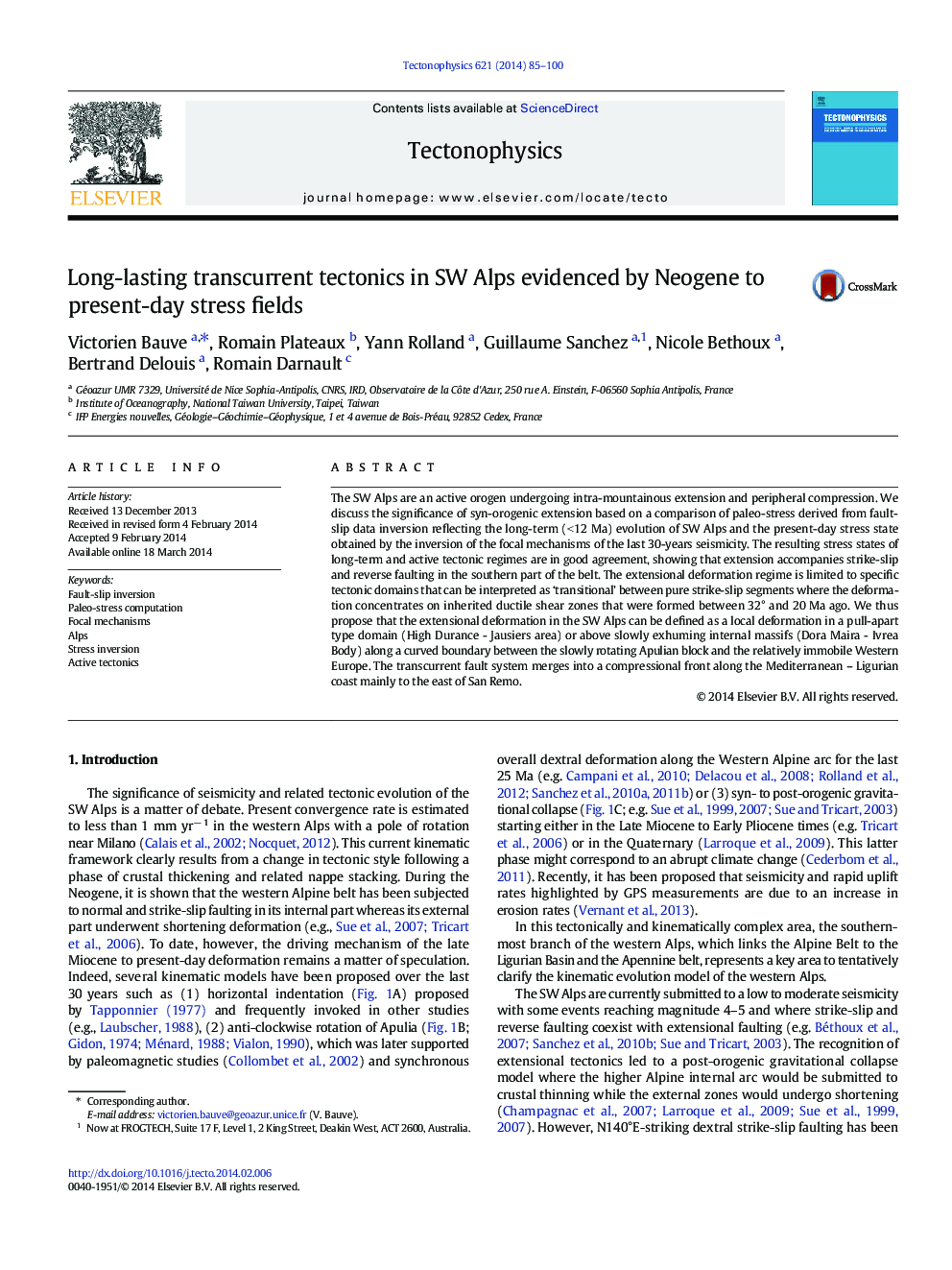| Article ID | Journal | Published Year | Pages | File Type |
|---|---|---|---|---|
| 6433860 | Tectonophysics | 2014 | 16 Pages |
â¢SW Alps undergo neogene-present intra-mountain extension and peripheral compression.â¢Comparison of Paleo-stress (fault-slip data) and current stress (focal mechanisms)â¢Results from both techniques are in good agreement.â¢Extension is limited to specific tectonic domains between pure strike-slip segments.â¢The transcurrent system merges into a compressional front along the Ligurian coast.
The SW Alps are an active orogen undergoing intra-mountainous extension and peripheral compression. We discuss the significance of syn-orogenic extension based on a comparison of paleo-stress derived from fault-slip data inversion reflecting the long-term (< 12 Ma) evolution of SW Alps and the present-day stress state obtained by the inversion of the focal mechanisms of the last 30-years seismicity. The resulting stress states of long-term and active tectonic regimes are in good agreement, showing that extension accompanies strike-slip and reverse faulting in the southern part of the belt. The extensional deformation regime is limited to specific tectonic domains that can be interpreted as 'transitional' between pure strike-slip segments where the deformation concentrates on inherited ductile shear zones that were formed between 32° and 20 Ma ago. We thus propose that the extensional deformation in the SW Alps can be defined as a local deformation in a pull-apart type domain (High Durance - Jausiers area) or above slowly exhuming internal massifs (Dora Maira - Ivrea Body) along a curved boundary between the slowly rotating Apulian block and the relatively immobile Western Europe. The transcurrent fault system merges into a compressional front along the Mediterranean - Ligurian coast mainly to the east of San Remo.
Graphical abstractDownload full-size image
